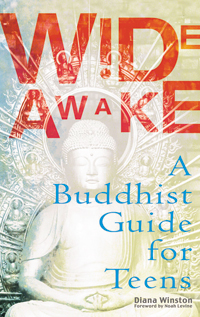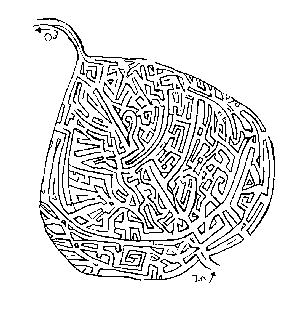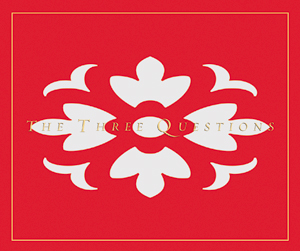BOOKS FOR GROWN-UPS
Dharma Family Treasures: Sharing Buddhism With Children, edited by Sandy Eastoak, was written just eleven years ago, but is now something of a classic for Buddhist parents. It contains essays by members of the San Francisco Zen Center, Thich Nhat Hanh and others.
While this section does not address teaching dharma to teens, there are excellent books for adolescents, including Just Say Om!: Your Life’s Journey by Soren Gordhamer (Adams Media, out of print) and Wide Awake: A Buddhist Guide for Teens (Perigee Trade). Both can be helpful for parents of younger children and for those framing practice programs for kids.
The Dharma Rain Zen Center in Portland, Oregon, self-publishesSharing the Dharma with Children: Dharma School & Camp at Dharma Rain Zen Center. In addition to general tips on sharing the dharma with kids, the book describes typical sessions of each of five different age group classes, the five main dharmic themes used (one each year on a rotating basis), six kid-friendly ceremonies, and their Buddhist summer camp. The book can be obtained for $15, including shipping and handling, from Dharma Rain Zen Center, 2539 SE Madison, Portland, OR 97214. Much of the content can also be found on the center’s website, Dharma-Rain.org (under Our Programs/Children’s Programs).
WEBSITES
The web, not surprisingly, is an extraordinary resource for information on dharma and children.
Findings run the gamut from local practice center programs for kids to computer games with Buddhist content. Take dharmagames.org, where you will find such gems as the “Abhidhamma Puzzle: Mind” or “Meditation Time,” the instructions for which begin, “It’s meditation time, but some of these monks aren’t meditating! Worse, they are standing up and ringing a bell, annoying everyone.” The following sites are also worth a look:
familybuddhism.com: An emerging site from England with information on teaching meditation and precepts to children.
Familydharma.pulelehuadesign.com to kids’ programs at various practice centers and Dharma the Cat cartoons.
Mindfuleducation.org: A well-maintained resource on contemplative and Buddhist strategies in education. Includes links to such manuscripts as the Garrison Institute’s comprehensive white paper on meditation in K-12 schools.
Thubtenchodron.org/YouthAndDharma: The American Buddhist nun has an extensive Q&A on teaching dharma to kids, as well as an article on bringing a Buddhist view to parenting and school.
Buddhamind.info/leftside/actives/craft.htm: A great collection of craft ideas and instructions for projects to do with kids, at home or as part of a group. Especially fun are the lantern and shrine projects.
BOOKS FOR KIDS
In addition to the books reviewed on the previous pages, there are dozens of other Buddhist books written for children.
Many, however, do not include stories and problems of real interest to children, or are so poetic and dogmatic few kids will buy into them. In fact, some of the books most useful in conveying stories about impermanence, self-discipline, patience, and the power of a child’s actions and words to hurt or to heal are not Buddhist per se. Charlotte’s Web by E. B. White, Because of Winn Dixie by Kate DiCamillo, and Esther Averill’s Jenny Linsky and the Cat Club are all superb and appropriate for children ages six to ten or older. The following offer specific dharma content and good stories to boot:
Buddha by Demi: Part of her graceful, historical series on religious leaders, with fabulous illustrations.
Hey Little Ant by Philip and Hannah Hoose: Empathy and nonviolence through the eyes of an insect.
Buddha Stories by Demi: Demi’s take on some Jataka tales.
Kindness: A Treasury of Buddhist Wisdom for Children and Adults by Sarah Conover: A fairly hefty volume of short stories; good for practice center program read alouds and for families.
The Three Questions by Jon Muth: Muth has done a number of Buddhist books for kids – his Stone Soup is terrific, too. Based on the Leo Tolstoy short story, a Mahayanist take on what the most important things are for a child to keep in mind. Beautifully illustrated by the author.